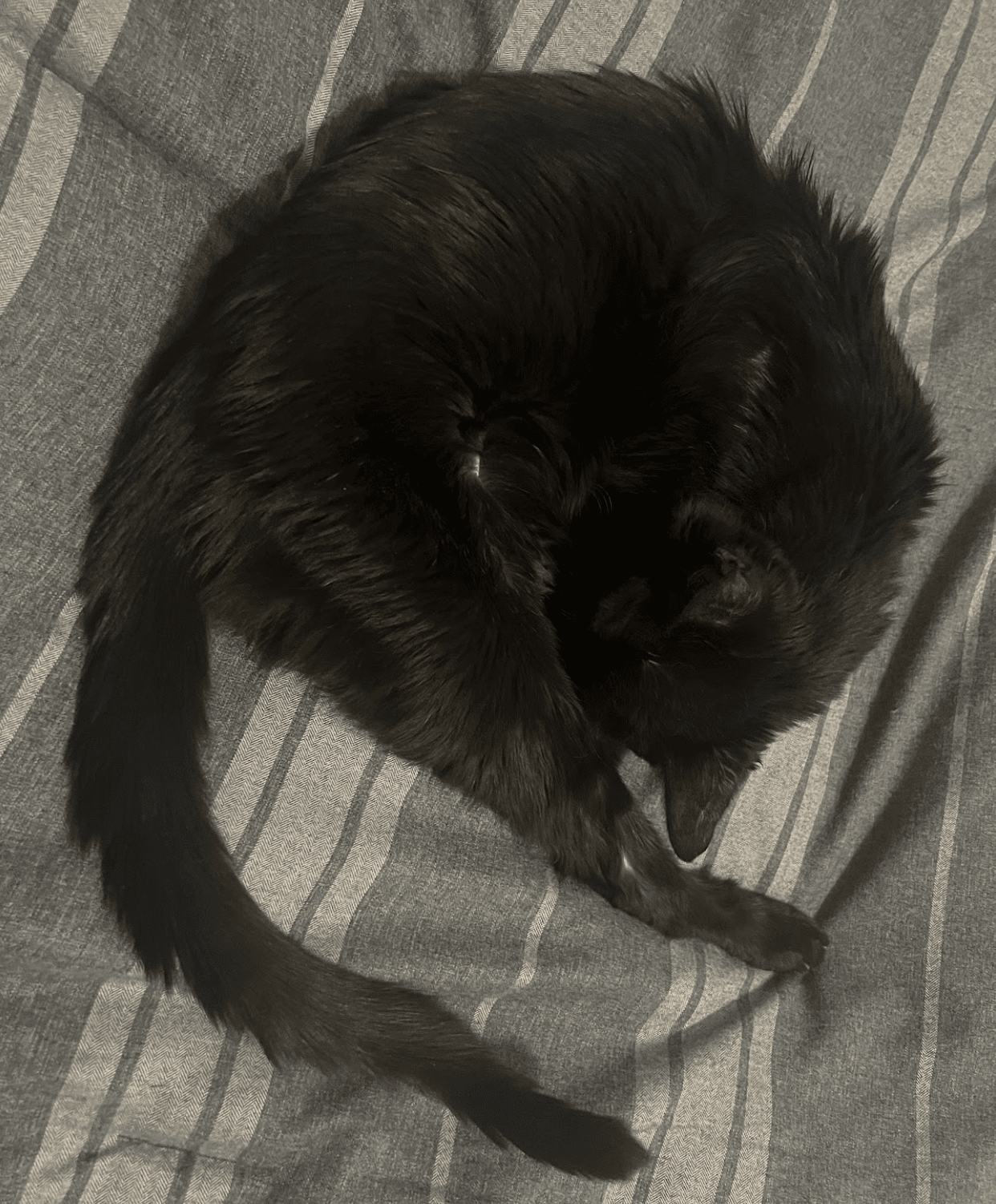Bobby’s Story
Our cat Bobby was considered elderly the day we adopted him, 9 years ago. “Thank you for adopting a senior!” the Denver Dumb Friends League (DDFL) cashier said when we checked out with our newest family member.
This was December of 2013. DDFL was concluding a month-long, doorbuster adoption event and cat adoption fees were only 10 dollars. As a result, there weren’t many cats left to choose from. On the way to the cat housing section, we noticed a cork board titled, “I’ve Been Here The Longest,” and saw the mugshot of an 11 year old black cat named Bobby. Bobby had two strikes against him: he was both a senior and a black cat, which are disproportionately overlooked for adoption and experience higher rates of euthanasia in the shelter setting. We found the room Bobby was housed in and within seconds, he had hopped into my husband’s lap. Bobby came home with us.

Fast forward 9 years and Bobby has gone from a senior adoptee to geriatric cat with many typical old cat maladies. He has chronic kidney disease, muscle wasting and at 20 years of age, severe arthritis pain. As someone whose job it is to help families answer the questions, “Is my pet in pain?” or “Does my pet still have a good quality of life?” I felt a lot of guilt. I cringed every time I saw Bobby get up from his heated bed and visibly limp to his food dish. His hunched posture and unkempt appearance resembled that of many cats I’ve helped to cross the rainbow bridge and I wrestled with the decision to do the same for him. Bobby slept 23 hours a day and only got up to eat and use the cat box. He still enjoyed being pet and talked to, but that was about it, as far as activities he still enjoyed. When he looked at me, I thought I could feel his eyes saying, “Well doc, when are you going to put an old man out of his misery?”
Pain Management in Cats
Pain management in cats is challenging. Cats are obligate carnivores, which means that, unlike humans or dogs, their livers did not evolve to detoxify substances found in plants. That means that many of the pain medications veterinarians reach for to treat pain in dogs are either too toxic or would be outright deadly to use in cats. Cats can also be more difficult to give oral medications to. For these reasons, arthritis pain often goes untreated or insufficiently treated and cats suffer.

Prior to Solensia, this was Bobby’s main activity for 23/24 hours of the day.
Introducing Bobby to Solensia
In September of this year, a long-awaited email appeared in my inbox. A new drug for treating arthritis in cats had been approved by the FDA and was finally available for purchase. Solensia is a once-monthly subcutaneous injection of cat-specific monoclonal antibodies against nerve growth factor. Nerve growth factor is a mediator of pain and when antibodies bind to it, pain signals are prevented from reaching the brain. Bobby was already getting gabapentin orally once daily for his arthritis, but was starting to be more crabby about taking his medication. The prospect of adding a pain medication that was a simple, once-a-month injection was very appealing.
Bobby received his first injection of Solensia on October 1st and the results were subtle, at first. Bobby resumed an endearing, if slightly obnoxious behavior that we hadn’t seen in over a year: hunting his toy rats. This involves carrying his toy rats from one room to the next and emitting a deep, bellowing yowl that is startlingly out of proportion to his frail body. This is most frequently heard at night.
But over the next month or two of injections, we started to see other changes. Bobby started hopping up to higher spots to look out the window-places he’d been unable to reach before. One day I noticed him start to climb out onto our catio for the first time. This newly built outdoor structure had only been used by our other, young cats, since it involves quite a bit of climbing and jumping up and down to access. This was especially heartwarming to me since one of Bobby’s favorite activities used to be laying in sunbeams on the deck of our condo. Since moving to our new house last summer and building a catio, Bobby had not been able to enjoy this activity.
Do You Relate to Bobby’s Story with Your Senior Cat?
Bobby continues to be more active and agile with his monthly Solensia injections but he is still in his end-of-life journey. I know that eventually his kidney disease or another diagnosis will catch up with him, but for now, I feel much better knowing that I’ve been able to truly enhance his quality of life by controlling his pain.
If your cat seems to be “slowing down,” is jumping up or down less, or just seems less active, ask your veterinarian if arthritis pain could be a factor and if your cat could benefit from Solensia. Solensia is one of many therapies Caring Pathways recommends to help cats live well as they approach life’s end.
If you’re worried about your senior cat and/or have questions about their quality of life, here are some helpful resources on our website:
Written by: Dr. Mavi Graves, Caring Pathways Veterinarian
Dr. Mavi moved back to CO to attend vet school at CSU. While at CSU, she served as a manager of the student volunteer pet hospice program and that’s when she discovered end-of-life care as her veterinary calling. Dr. Mavi feels that the end-of-life journey is an incredibly sacred and meaningful time to serve pet families and she feels strongly about the importance of letting pets pass away at home. It is an honor to facilitate gentle and peaceful euthanasia experiences and to that end, Dr. Mavi has earned her Fear-Free Certification. She is also working towards acupuncture certification and strives for excellence and personal betterment in supporting pet owners through what may be one of the most difficult days of their lives.

